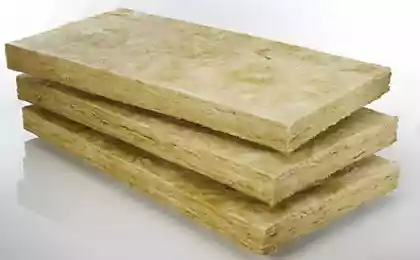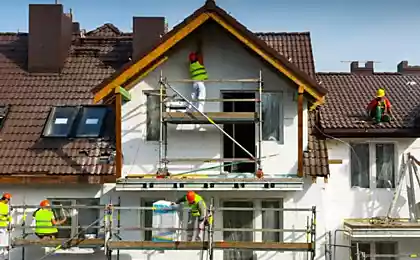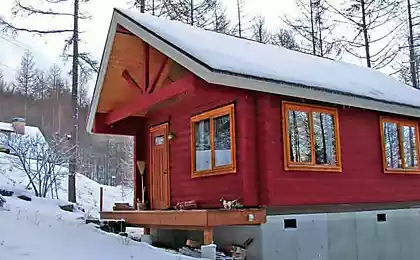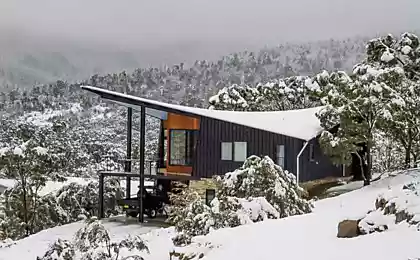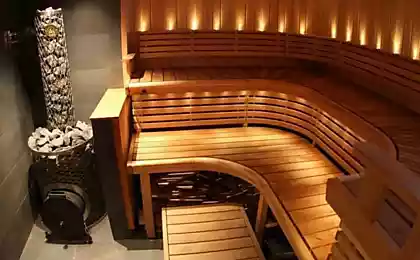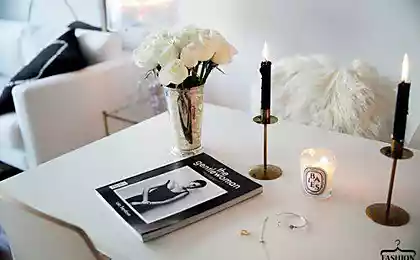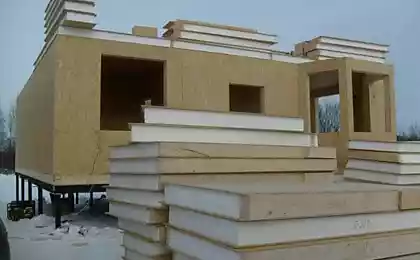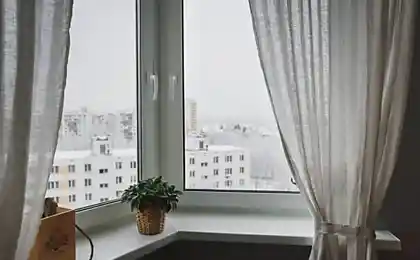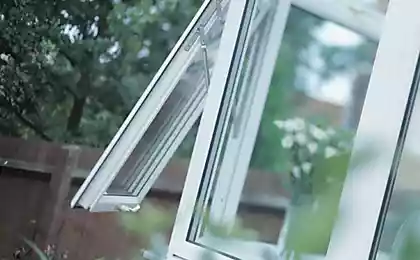507
The 8 most popular natural insulation for your home - save on heating
Over the past few years natural environmental-friendly insulation materials are experiencing a real boom of popularity. Low thermal conductivity, versatility, environmental friendliness, low price, durability is not a complete list of their advantages.Before the onset of severe frosts there is still time and if you want to totality house, then look at natural insulation, which we'll cover in this article.
FlaxPlant fibers have long been used as mezhventsovogo seals in wooden houses. Surely you have seen the log house, caulked oakum, which is a waste from processing of flax.
Modern products are more sophisticated – is flax felts and rolls
tape tow. This strip is uniform in thickness and width and it is convenient to use.
The same can be said about the insulation from short flax fibers, which are produced in the form of mats and slabs in different sizes and thickness of 50 and 100 mm, density 25 – 40kg/CBM
The flax used for the insulation of exterior walls, roofs, partitions and floors. Due to the natural origin of the material can be used for interior sound proofing and insulation, and to improve fire resistance in the process of production in the insulation, add salt boron or produce surface treatment of the flame retardant substances.
There are material and are completely natural, without any additives. The lifetime of flax insulation 70 years and more.
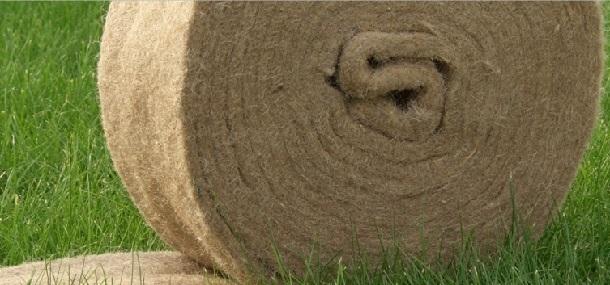
HempInsulation hemp is similar to linen and is used in similar cases. The main feature – it does not make domestic producers. It is understandable, we have industrial hemp cultivation is prohibited, so the market can meet only German goods in rolls and slabs in different thickness and sizes. According to their operating characteristics, to insulate not inferior to the linen.
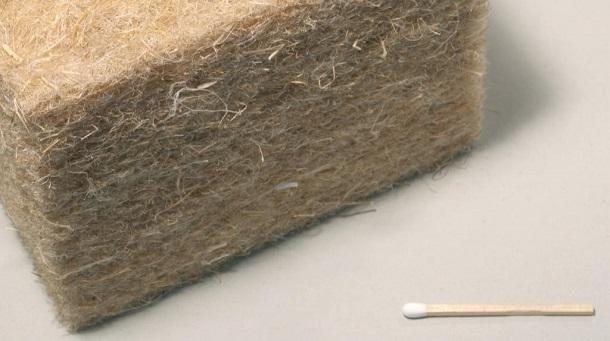
Peat blocksFor obtaining this form of insulation peat is sifted, mixed with water and bring to a thick paste. Then added to the wood waste compressed into blocks and dried. Due to the antiseptic properties of peat, in blocks does not appear to be fungi and mold, and the porous structure does not damage the freezing of the condensate. So there is no need paroizoliruyuschimi membrane and forced ventilation.
As for the insulating properties, then a half-meter wall of peat blocks match the wooden wall with a thickness of half a meter. The material is very durable, convenient for transportation and installation. The blocks are placed with a bandage without mortar and can withstand heavy load, do not shrink. Therefore, the peat blocks used for construction of walls in frame houses. The durability can reach more than 75 years.
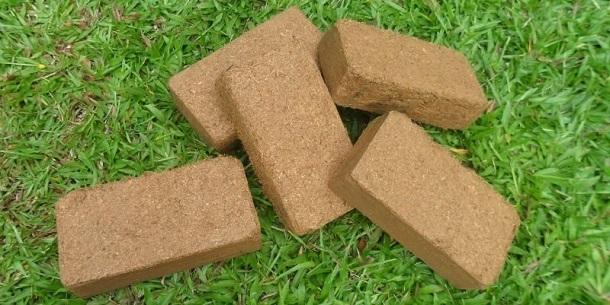
Cellulose woolThis wool is made from cellulose. Refers to organic materials. Contains an additive of mineral compounds of boron that give it antiseptic properties and resistance to fire. In appearance it is a light, fluffy mass. It is applied to the insulated surface by using a blowing machine. The material fills the prepared cavity, it penetrates easily in hard to reach places.
Cellulose wool can be used for insulation of any structure of the house: floors, walls, internal partitions and pitched roofs. With the exception of rooms with high humidity, because cellulose is hygroscopic.
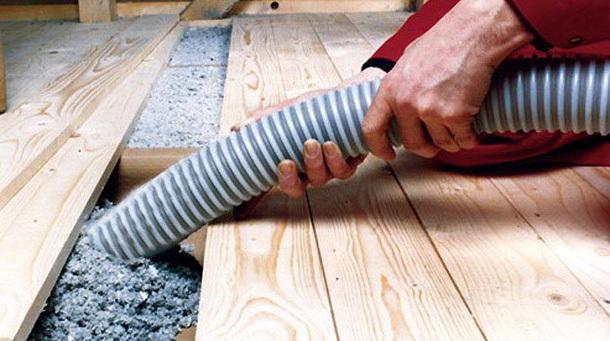
Sheep woolthermal Insulation material contains new and recycled fleece.
Available in a wool fabric with a thickness of 20 to 120 millimeters of different density. High humidity can absorb water about 30% of their dry weight, then releases it. This creates a comfortable microclimate in the premises, and allows to do without the use of a vapor film.
Suitable for thermal insulation of walls, partitions, ceilings, space between the rafters and the construction of frame panel houses. The wooden frame material is fixed construction stapler.
Manufacturers in the wool adds a means to deter insects. Also imported insulation treated with fire protective substances. Domestic material such supplements do not exist, so it is more environmentally friendly.
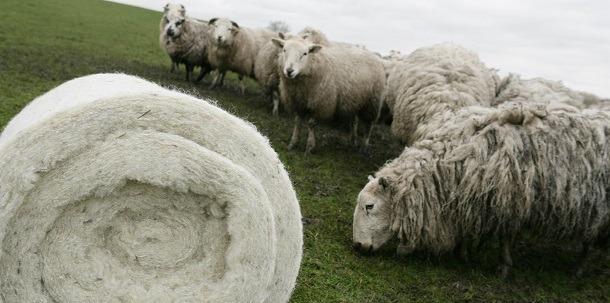
Hardboardproduced from shavings and other wood waste. Due to low thermal conductivity, high permeability and high strength, soft plates are not only a great insulator but also a good decoration material, which is easy to install. In addition it is easy to process with ordinary tools for wood.
These boards do not change their structure, they are not afraid of fluctuations of relative humidity, they are not deformed and does not shrink. Suitable for insulation and sound proofing of any structures, especially wooden.

TubeFor our area rather exotic material, as doing it from the bark of the Mediterranean cork oak which grows in Portugal. Ground bark is treated with hot steam mixed with natural cork with resin and pressed into forms.
Then cut into slabs. The porous structure provides good insulation and breathability, and resin gives resistance to rot and cause mold.
Light cork boards millet stack, they are well cut. The material used for both exterior and interior thermal insulation of buildings. Insulated with cork slab, the facade can be plastered. Panels of tubes can be used for finishing floors and walls.
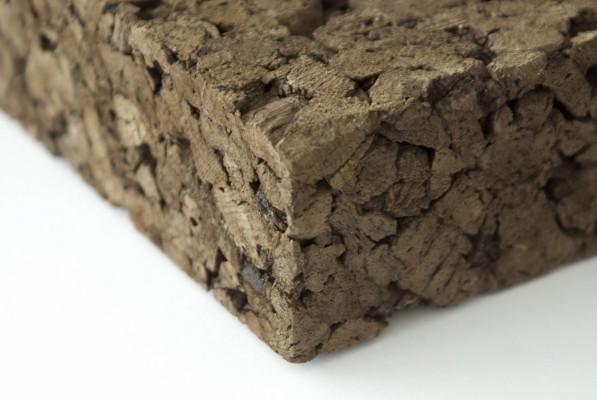
KamkaKamka is an organic material, which is made from storm emission seaweed Zostera. This plant is common in the Black sea.
Kamka is a good insulator, does not rot, does not lose properties when wet and does not support combustion. Due to the large number of calcium salts in it does not infest rodents and harmful insects. At high humidity. takes the excess moisture from the premises, and in dry air, on the contrary, it moisturizes.
It is one hundred percent environmentally friendly material. We can say, even therapeutic, as it contains organic compounds of iron, iodine, cobalt, zinc, amino acids. And it has a biologically active substance is a polysaccharide feconda, which has an antitumor effect. This material is a soft smell of iodine, hydrogen sulfide and bromine. It has a beneficial effect on the respiratory and nervous system. published
P. S. And remember, only by changing their consumption — together we change the world! ©
Join us in Facebook , Vkontakte, Odnoklassniki
Source: homester.com.ua/dacha-sad/10-samih-populyarnih-utepliteley/
FlaxPlant fibers have long been used as mezhventsovogo seals in wooden houses. Surely you have seen the log house, caulked oakum, which is a waste from processing of flax.
Modern products are more sophisticated – is flax felts and rolls
tape tow. This strip is uniform in thickness and width and it is convenient to use.
The same can be said about the insulation from short flax fibers, which are produced in the form of mats and slabs in different sizes and thickness of 50 and 100 mm, density 25 – 40kg/CBM
The flax used for the insulation of exterior walls, roofs, partitions and floors. Due to the natural origin of the material can be used for interior sound proofing and insulation, and to improve fire resistance in the process of production in the insulation, add salt boron or produce surface treatment of the flame retardant substances.
There are material and are completely natural, without any additives. The lifetime of flax insulation 70 years and more.

HempInsulation hemp is similar to linen and is used in similar cases. The main feature – it does not make domestic producers. It is understandable, we have industrial hemp cultivation is prohibited, so the market can meet only German goods in rolls and slabs in different thickness and sizes. According to their operating characteristics, to insulate not inferior to the linen.

Peat blocksFor obtaining this form of insulation peat is sifted, mixed with water and bring to a thick paste. Then added to the wood waste compressed into blocks and dried. Due to the antiseptic properties of peat, in blocks does not appear to be fungi and mold, and the porous structure does not damage the freezing of the condensate. So there is no need paroizoliruyuschimi membrane and forced ventilation.
As for the insulating properties, then a half-meter wall of peat blocks match the wooden wall with a thickness of half a meter. The material is very durable, convenient for transportation and installation. The blocks are placed with a bandage without mortar and can withstand heavy load, do not shrink. Therefore, the peat blocks used for construction of walls in frame houses. The durability can reach more than 75 years.

Cellulose woolThis wool is made from cellulose. Refers to organic materials. Contains an additive of mineral compounds of boron that give it antiseptic properties and resistance to fire. In appearance it is a light, fluffy mass. It is applied to the insulated surface by using a blowing machine. The material fills the prepared cavity, it penetrates easily in hard to reach places.
Cellulose wool can be used for insulation of any structure of the house: floors, walls, internal partitions and pitched roofs. With the exception of rooms with high humidity, because cellulose is hygroscopic.

Sheep woolthermal Insulation material contains new and recycled fleece.
Available in a wool fabric with a thickness of 20 to 120 millimeters of different density. High humidity can absorb water about 30% of their dry weight, then releases it. This creates a comfortable microclimate in the premises, and allows to do without the use of a vapor film.
Suitable for thermal insulation of walls, partitions, ceilings, space between the rafters and the construction of frame panel houses. The wooden frame material is fixed construction stapler.
Manufacturers in the wool adds a means to deter insects. Also imported insulation treated with fire protective substances. Domestic material such supplements do not exist, so it is more environmentally friendly.

Hardboardproduced from shavings and other wood waste. Due to low thermal conductivity, high permeability and high strength, soft plates are not only a great insulator but also a good decoration material, which is easy to install. In addition it is easy to process with ordinary tools for wood.
These boards do not change their structure, they are not afraid of fluctuations of relative humidity, they are not deformed and does not shrink. Suitable for insulation and sound proofing of any structures, especially wooden.

TubeFor our area rather exotic material, as doing it from the bark of the Mediterranean cork oak which grows in Portugal. Ground bark is treated with hot steam mixed with natural cork with resin and pressed into forms.
Then cut into slabs. The porous structure provides good insulation and breathability, and resin gives resistance to rot and cause mold.
Light cork boards millet stack, they are well cut. The material used for both exterior and interior thermal insulation of buildings. Insulated with cork slab, the facade can be plastered. Panels of tubes can be used for finishing floors and walls.

KamkaKamka is an organic material, which is made from storm emission seaweed Zostera. This plant is common in the Black sea.
Kamka is a good insulator, does not rot, does not lose properties when wet and does not support combustion. Due to the large number of calcium salts in it does not infest rodents and harmful insects. At high humidity. takes the excess moisture from the premises, and in dry air, on the contrary, it moisturizes.
It is one hundred percent environmentally friendly material. We can say, even therapeutic, as it contains organic compounds of iron, iodine, cobalt, zinc, amino acids. And it has a biologically active substance is a polysaccharide feconda, which has an antitumor effect. This material is a soft smell of iodine, hydrogen sulfide and bromine. It has a beneficial effect on the respiratory and nervous system. published
P. S. And remember, only by changing their consumption — together we change the world! ©
Join us in Facebook , Vkontakte, Odnoklassniki
Source: homester.com.ua/dacha-sad/10-samih-populyarnih-utepliteley/
The Tibetan effective method for the treatment of angina
Bear as much as will be able to feed itself


